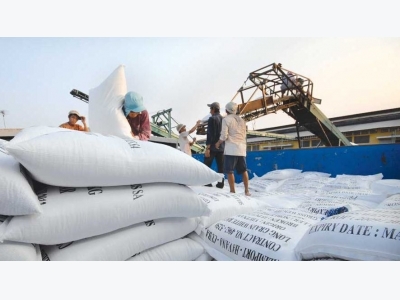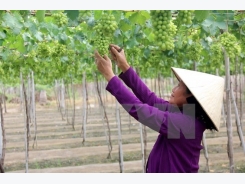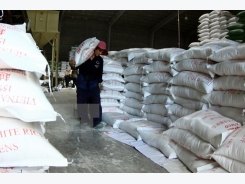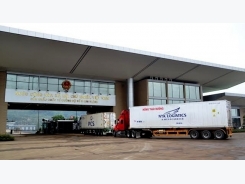Vietnams rice exports return to growth

After months of significant reductions, Vietnam’s rice exports have finally returned to growth thanks to positive market news.
According to the Ministry of Agriculture and Rural Development, Vietnam shipped 2.3 tonnes of rice in the first five months of 2017, bringing in US$1 billion, up 1.6% in volume and 1.2% in value. Thanks to such positive figures, the rice sector has escaped a long period of shrinking exports and re-joined the club of commodities with respective export values reaching over US$1 billion.
China is currently the largest buyer of Vietnamese rice, importing 815,000 tonnes worth US$376 million, up 16% over the same period of 2016. Shipments to China, which has a preference for glutinous and jasmine rice from Vietnam, account for 47.5% of Vietnam’s total rice exports. Although rice exports are still experiencing some difficulties, shipments to China remain strong, especially through official channels.
Vietnam has also received good news from Bangladesh after a memorandum between the two countries was renewed until 2022, under which Vietnam will provide Bangladesh with one million tonnes of rice of different strains depending on the South Asian country’s demand and market prices.
Immediately after this agreement was signed, Bangladesh placed an order for 250,000-300,000 tonnes of Vietnam’s 5% broken white rice this year. The Bangladesh side has also invited a Vietnamese representative to visit Bangladesh as soon as possible to discuss the price, quantity and delivery method for the order.
In addition, the National Food Authority of the Philippines recently announced that it would hold a bidding session in June to purchase 250,000 tonnes of rice to increase its national reserve ahead of typhoon season. Enterprises from Thailand, Vietnam, India and Pakistan can all offer their bids. In addition, the Philippines will have to import at least 1.5 million tonnes of rice from now until the first quarter of 2018 to meet domestic demand, which is a good opportunity for Vietnamese rice exporters.
There are also some bright signs from the supply side as Thailand has unloaded most of its stockpile, a significant factor which will help the global rice trade to return to normal without a strong pressure on prices as of late.
Thanks to such positive news, Vietnam’s rice export prices have been on the rise. According to the Vietnam Food Association, the price for a tonne of 5% broken rice has increased from US$360-380 at the end of May to US$390, the highest level since December 2014. Domestic prices have also risen by VND250-550 per kilogram.
However, it is predicted that Vietnam’s rice sector will continue experiencing numerous difficulties. For example, China is tightening cross-border rice trade and increasing imports through official channels. The Philippines has also changed to a new rice import mechanism in which rice will be bought by private enterprises instead of through government bidding. Although this may make Vietnamese enterprises more proactive in approaching foreign customers but if the quality is not improved and Vietnamese brands remain unknown, Vietnamese exporters will find it hard to compete with other suppliers from regional countries.
Therefore, it is necessary to fine-tune existing policies to facilitate rice exports, in addition to the immediate task of finding new orders. Recently the Ministry of Industry and Trade (MOIT) finished compiling a new decree on rice trading with many amendments such as loosened requirements on warehouses and supportive measures to develop high-quality rice growing areas. The new decree, expected to create the most favourable conditions for rice exporters, has been publicised for feedback and will soon be promulgated.
Tran Thanh Hai, Deputy Director of the MOIT’s Export-Import Department, said the majority of feedback from rice exporters and local governments in the Mekong Delta, Vietnam’s rice bowl, has been positive due to the MOIT’s more relaxed conditions for rice exports.
Có thể bạn quan tâm
Phần mềm

Phối trộn thức ăn chăn nuôi

Pha dung dịch thủy canh

Định mức cho tôm ăn

Phối trộn phân bón NPK

Xác định tỷ lệ tôm sống

Chuyển đổi đơn vị phân bón

Xác định công suất sục khí

Chuyển đổi đơn vị tôm

Tính diện tích nhà kính

Tính thể tích ao hồ




 Hai Duong province calls for investment in agriculture
Hai Duong province calls for investment in agriculture  Dragon fruit exports to China surge through Lao…
Dragon fruit exports to China surge through Lao…